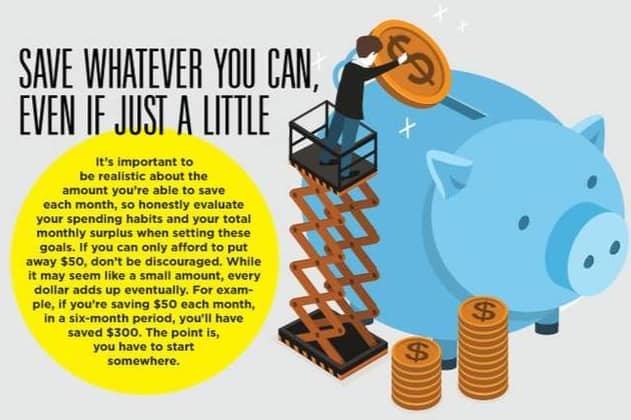
Imagine the last financial crisis you had. It was likely something you didn’t expect, but you needed to handle right away. Maybe you blew a tire on the way to dinner. Maybe your refrigerator went kaput. Maybe you had an unexpected medical bill.
The common thread here is that all of these things are minor economic emergencies. No one is going to die if these emergencies aren’t dealt with as soon as possible, but when the unexpected occurs, you need to be able to handle it.
For people who are living paycheck to paycheck, something small like a blown tire can lead to financial hardship. Maybe you don’t have a credit card, are already over the limit, and/or don’t have a good credit score. Maybe the only option is to take out a payday loan. If that’s the case, a $100 tire can end up costing $400 because of interest and fees.
The tire example is common — so much so that there are rent-to-own tire places popping up in the valley that sell used tires for two to five times the price of a new one, masking the cost with seemingly low monthly payments.
But for people who have $500 or even $1,000 saved for emergencies, life’s little hiccups are so much easier to handle.
There are many little ways to be knocked off your budget that can spiral into bigger financial problems down the road. While we can’t always budget for the unexpected, we can prepare for it by setting up an emergency savings fund.
How to build an emergency fund
Building your first emergency fund might seem like a tall order. Many people will tell you that your savings need to be able to cover three to six months’ worth of expenses, but this can be daunting for the average person. For now, let’s start simpler.
Your first goal? Save $100 — enough to cover that tire. If you’ve been working on your basic budget, you know how much you have left over at the end of each month. If you have a monthly surplus, it’s time to start working a small savings goal into your budget.
Example: If you have $2,500 in monthly expenses, and your monthly income is $3,000, you will have a surplus of $500 at the end of each month to put into your emergency fund.
Before we cover nonessential spending or dealing with debt, it’s important to tackle the task of building a small emergency fund, which is essential for everyday living. In the beginning, this fund doesn’t have to be huge, but you still need to have one as a part of any personal finance plan.
An emergency fund doesn’t have to get you through unemployment, but it should ensure that you’re able to cope with a minor crisis without taking on new debt. Once you’ve built an emergency fund of $500-$1,000, you’ll be able to handle most small problems.
It’s important to be realistic about the amount you’re able to save each month, so honestly evaluate your spending habits and your total monthly surplus when setting these goals.
If you can only afford to put away $50, don’t be discouraged. While it may seem like a small amount, every dollar adds up eventually. For example, if you’re saving $50 each month, in a six-month period, you’ll have saved $300. The point is, you have to start somewhere.
And don’t forget, emergency funds are only for emergencies. You should never dip into that money for everyday expenses.
